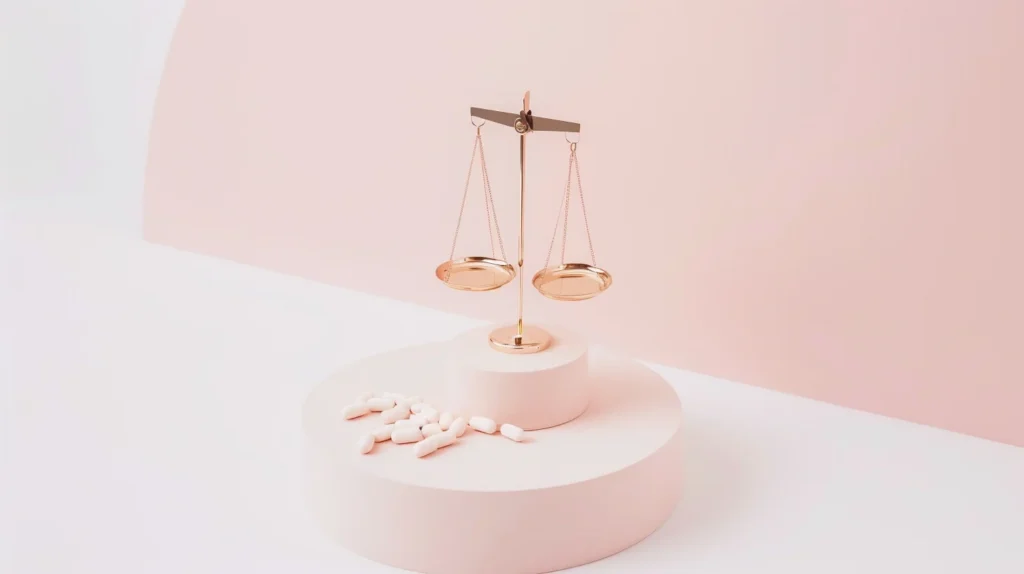
I grew up in Thunder Bay, Ontario, surrounded by cold lakes, dense forests, and people who look out for one another. That setting, with its mixture of beauty and isolation, quietly taught me how easily a person can feel both connected and alone. When I began practicing medicine, those early lessons stayed with me. I still remember a patient – let’s call him Jake – who had tried every antidepressant in the textbook. You might know how it goes: one medication, then another, each one bringing side-effects but no lasting relief. Jake told me, “Doc, I’ve started to feel like I’m made of Teflon. Nothing sticks.”
Cases like his pushed me to look beyond standard algorithms. In 2019 I established Bay and Algoma Health Centre, a walk-in and addiction-medicine clinic. That same year I founded Field Trip Health so that people like Jake could explore novel treatments – in particular Ketamine-Assisted Psychotherapy (KAP) inside spaces that feel more like wellness retreats than sterile hospital rooms. The response you and others have given us over the past few years has been humbling: thousands of people across Canada have walked through our doors hoping for transformation, and many have described meaningful shifts in their lives.
Because of that work, you can imagine how often someone now asks me whether “microdosing MDMA” could be the missing puzzle piece for depression, anxiety, PTSD, or even everyday productivity. I understand the intrigue. Stories circulate online about tiny crystals of MDMA (3,4 methylenedioxymethamphetamine) that are claimed to lift mood, deepen empathy, and sharpen concentration without any comedown. The promises are seductive, and I respect the courage it takes for you to ask whether those anecdotes match reality. In this article I’m going to tell you exactly what the science shows, where it stays silent, and why the answer matters to anyone seeking authentic healing rather than hype.
What Exactly Is MDMA?
MDMA is a synthetic compound that German pharmaceutical company Merck first created in 1912. Pharmacologically, MDMA causes a surge of serotonin, norepinephrine, and dopamine – the very neurotransmitters that shape mood, alertness, and reward. It also boosts oxytocin, a hormone tied to trust and social bonding, while dialing down fear circuits in the amygdala. In clinical research settings, when adults receive doses in the 75–125 mg range inside a safe, supervised clinical environment, those combined effects can create what many participants describe as “eight hours of feeling both brave and gentle at the same time.” In those research settings, trained therapists use that window to help people revisit traumatic memories without drowning in them.
Microdosing MDMA, by contrast, is typically described as taking one-tenth to one-twentieth of a standard dose – so perhaps 5-15 mg – and repeating that tiny amount every few days for weeks or months. The idea, in theory, is that such sub-perceptual dosing could nudge brain chemistry just enough to brighten mood or sharpen focus while avoiding noticeable intoxication, cardiovascular spikes, or emotional swings, but this has not been established as safe or effective in clinical trials. If you’ve seen friends microdose psilocybin or LSD, you already know the cultural template. People have simply applied the same logic to MDMA. The question we need to answer together is whether the logic holds up when subjected to rigorous testing.
Defining “Microdosing” – Hype vs Reality
The term “microdosing” did not originate with MDMA. It started in Silicon Valley boardrooms and Reddit forums where professionals described taking crumbs of LSD before brainstorming sessions. When journalists began equating all psychedelics, MDMA got swept into the same conversation, even though its pharmacology differs greatly from classic hallucinogens.
People who report microdosing MDMA typically describe measuring out about 10 mg, swallowing the capsule in the morning, skipping a day, then repeating – a pattern often referred to as “one day on, two days off.” People who follow that MDMA microdosing schedule report subtle shifts:
- colors appear brighter
- conversations feel warmer
- tedious tasks seem less aversive
Because those anecdotes are everywhere, you might assume dozens of randomized trials corroborate them. Yet the reality is almost the opposite. A 2024 systematic review revealed that fewer than nineteen placebo-controlled studies have ever examined microdosing, and every single one used LSD or psilocybin – not MDMA. In other words, we lack direct human evidence.
When you read bloggers who quote impressive percentages or neurotransmitter pathways, remember they’re extrapolating from full-dose MDMA research or from micro-psilocybin data. Extrapolation is not proof. In my clinic I’ve adopted a simple mantra for new protocols: “Show me the data first, then we’ll talk about the dosing schedule.” Right now, microdosing MDMA hasn’t crossed that threshold.
Evidence for MDMA-Assisted Therapy
Before looking further at microdosing, you deserve a clear understanding of why MDMA appears in medical journals at all. The headline is straightforward: clinical trials of full-dose, professionally guided MDMA therapy have reported promising results for severe, treatment-resistant PTSD.
A 2023 Phase 3 study involving 104 adults found that 71.2% of those who received MDMA-assisted therapy no longer met diagnostic criteria for PTSD once treatment ended, compared with 47.6% in the therapy-plus-placebo group. The same trial reported that 86.5% of MDMA recipients achieved a clinically meaningful symptom drop of at least ten points on the gold-standard CAPS-5 scale, while 69% of the placebo group did the same. To put that in context, published data on first-line medications such as sertraline or paroxetine suggest that roughly 35–47% of patients may be left without adequate relief, a gap that has frustrated trauma survivors and clinicians alike for decades.
Safety data from that study are also encouraging in the specific research context. The trial documented that 98.1% of participants experienced at least one side-effect – think jaw tension, mild nausea, or temporary spikes in blood pressure – but there were no serious adverse events or deaths. Each session unfolded in a carefully monitored room with two trained therapists, medical oversight, and eight hours blocked off for emotional processing. That framework is crucial. The drug alone is not the therapy.
From my vantage point, these numbers highlight a possibility you might already sense: in structured research settings, MDMA-assisted psychotherapy may help some people begin to rewrite a traumatic narrative. Yet you can’t assume the same magnitude of change will emerge if you sprinkle minuscule doses into your morning routine. Dose matters, and so does context.
What Research Exists on MDMA Microdosing?

If we confine ourselves to double-blind, placebo-controlled human trials, the cupboard is almost bare. One crossover study looked at a 0.75 mg/kg dose – around 55 mg for an average adult – so that’s roughly half the therapeutic amount, not a microdose. Even that “low” dose produced a mean “feel drug effect” rating of 47.8 on a 0-100 scale, compared with 22.8 after placebo. If you shrink the dose further to true microdosing ranges, we simply don’t have laboratory evidence yet.
We do have survey data, but surveys come with heavy caveats. For example, an online questionnaire of psychedelic enthusiasts suggested that some people microdosing MDMA felt kinder, more energetic, and less anxious. The problem is that expectancy can color every response. A particularly striking example comes from LSD research: a double-blind study with 191 participants discovered that subjective well-being rose over four weeks in both microdose and placebo groups, and there were no significant differences between them. If the same placebo effect dominates MDMA microdosing – an untested but plausible scenario – you could be risking legal trouble and cardiovascular strain for benefits a sugar pill might match.
Animal models muddy the waters further. Rodents exposed to chronic, low-level MDMA show conflicting outcomes. Translating those results to human well-being is speculative at best.
In plain language, you and I must admit the evidence is largely “missing in action.” Until controlled trials finish, we’re working inside a data vacuum – and vacuums get filled quickly by anecdotes, marketing claims, and wishful thinking.
Why Might Tiny MDMA Doses Seem Appealing?
Whenever solid data lag behind public interest, mechanistic speculation rushes in. I teach medical students that a plausible mechanism can inspire a hypothesis, but only experiments determine truth. Still, you deserve to understand why MDMA microdosing proponents sound convincing in conversation.
- Some argue that mini-surges of serotonin could top-up mood every couple of days without exhausting neurotransmitter stores.
- Others point to oxytocin, suggesting that frequent, subtle increases might make you feel warmer toward family, coworkers, and even strangers on the subway.
- A third group suggests that MDMA’s capacity for “fear extinction” at high doses might, in micro form, promote gradual desensitization to stressful memories in a gentler way.
- Finally, there’s the neuroplasticity angle: perhaps tiny MDMA doses repeatedly tickle BDNF (Brain-Derived Neurotrophic Factor) pathways, nudging the brain toward greater flexibility and resilience.
I can tell you that each of those theories contains a kernel of biological plausibility. Yet plausibility does not equal proof, and some hypotheses cut both ways. For instance, chronically releasing small amounts of serotonin could deplete supplies, leading to the very “mid-week crash” MDMA microdosers are hoping to sidestep. Continuous oxytocin stimulation might down-regulate receptors, blunting empathy over time. And we have no imaging evidence that fear circuits respond meaningfully to doses so low you barely feel them. Until PET scans, EEGs, and functional MRIs confirm these effects, they remain enticing stories rather than medical facts.
MDMA Microdosing Safety, Risks, and Unknowns
Whenever you contemplate a new intervention, I encourage you to ask three questions: “What do we know?”, “What do we not know?”, and “What could go wrong?” With microdosing MDMA, the answers stack up quickly.
In the short term, even small doses (for example, amounts in the 10–15 mg range reported anecdotally) can elevate blood pressure and heart rate, which matters if you have untreated hypertension, arrhythmias, or a family history of cardiac disease. MDMA also interacts with selective serotonin reuptake inhibitors (SSRIs) and monoamine oxidase inhibitors (MAOIs); mixing them can precipitate serotonin syndrome – a medical emergency marked by agitation, fever, and muscle rigidity.
Neurotoxicity looms in the medium term. High-dose recreational MDMA has shown damage to serotonin axons in animal models. You might think a microdose is too small to matter, but chronic exposure could accumulate. Because controlled human data don’t yet exist, nobody can guarantee long-term neural safety.
Purity poses another challenge. Underground MDMA is notoriously adulterated. One Health Canada alert last year revealed tablets marketed as MDMA that contained fentanyl analogues – a molecule so potent that a “microdose” equals a fatal dose. Clinical MDMA used in regulated research is GMP-certified. Street versions are not. A single contaminated capsule can derail a person’s life, and I would never wish that risk on you.
Finally, the legal landscape is unforgiving. Possessing any MDMA, let alone ordering gel-caps by mail, can expose you to criminal charges. You could follow every harm-reduction guideline in good faith and still end up facing physiological, neurological, or legal harm that outweighs unproven benefits.
Legal Landscape in Canada, the US, and beyond

Laws governing MDMA and other psychedelic substances vary by country, and these regulations strongly shape access.
In Canada, MDMA is classified as a Schedule I substance under the Controlled Drugs and Substances Act. This designation means it is generally prohibited and not available for routine medical use. Physicians may, in limited circumstances, submit a request through Health Canada’s Special Access Program on behalf of a patient with a serious or treatment-resistant condition. These requests are considered on a case-by-case basis and must demonstrate medical necessity. At present, approvals are limited to carefully monitored, clinic-based use in regulated settings, not at-home self-administration or microdosing.
South of our border, the U.S. Food and Drug Administration granted MDMA-assisted psychotherapy Breakthrough Therapy status. If approval does materialize, any prescription will almost certainly mirror the Canadian model: high-dose sessions supervised by trained therapists.
Across the Pacific, Australia recently began allowing certain psychiatrists to prescribe MDMA-assisted psychotherapy for PTSD in highly regulated programs, again under strict monitoring, and again with no allowance for microdosing.
Europe remains in the research phase, with tight restrictions.
All of these pathways converge on a single principle: regulators embrace MDMA only when robust data back controlled, high-dose therapy in regulated settings. MDMA microdosing, still devoid of trials, stands outside every legal framework I know.
Questions I Receive From Patients
I feel emotionally flat after years on SSRIs. Could microdosing MDMA restore my feelings?
In my experience, emotional blunting is a real and painful side-effect of long-term SSRI use. I understand why you might hope that tiny MDMA doses could rekindle your emotional range. Theoretically, MDMA’s serotonin release could counterbalance SSRI-related dampening, but we have no studies confirming that effect, and mixing the two could trigger serotonin syndrome. If you’re struggling with numbness, I encourage a dialogue with your prescriber about dose adjustments or alternative treatments – including discussing whether ketamine-assisted psychotherapy (KAP) or other options might be appropriate in your situation – rather than unmonitored MDMA microdosing.
Isn’t a small dose inherently safer than a large one?
Lower dose does not guarantee minimal risk. Think of alcohol: a daily sip can still damage the liver over time. With MDMA, cardiovascular stress, neurotoxicity, and impurity dangers don’t disappear simply because the capsule is smaller. Until trials quantify cumulative exposure, we can’t label microdosing “safer” in any meaningful way.
Could I microdose while waiting for full-dose MDMA to become legal?
That’s a tempting workaround, and I respect the proactive spirit behind it. Still, I have to advise against it. Self-medicating could jeopardize your eligibility for future clinical programs, expose you to legal charges, and undermine the data-driven approach regulators use to protect public safety.
What if I combine microdose MDMA with other psychedelics – say, psilocybin?
Stacking compounds multiplies unknowns. Without studies, we can’t predict pharmacodynamic interactions or psychological outcomes. My rule of thumb is simple: avoid poly-dosing until research clarifies the risks and benefits of each substance individually.
KAP and MDMA Therapy at Field Trip Health

At Field Trip Health, our core offering today is ketamine-assisted psychotherapy (KAP). If you’ve reached a state where traditional medications and talk therapy leave you stuck, KAP may provide a legal, evidence-informed alternative under appropriate medical supervision.
How does KAP work in practice? First, you complete a comprehensive medical intake so we can screen for contraindications like uncontrolled hypertension or active psychosis. Next, you spend about 90 minutes in a softly lit therapy suite receiving intramuscular or sublingual ketamine while a licensed clinician monitors your vitals. Finally, you meet with your therapist for integration sessions that aim to turn break-through insights into sustainable behavioural shifts.
Many people curious about microdosing MDMA are essentially looking for three things:
- rapid relief
- sense of agency
- profoundly supportive environment
KAP may address many of those goals. Preliminary studies have reported symptom reductions within hours or days in many participants, and our internal program data are consistent with these emerging findings, though they are not a substitute for large, independent clinical trials.
MDMA therapy is a bit different with each session in research settings lasting from six to eight hours, and it is not yet available for routine clinical use.
Field Trip Health is committed to advancing research in this area. Our teams are working with partners to design studies that may, if approved, evaluate the safety and effectiveness of MDMA-assisted psychotherapy in structured, medically supervised settings. These studies are intended to explore how preparation, dosing, and integration support can be combined to optimize potential therapeutic outcomes observed in research.
If you are considering psychedelic-assisted therapy, we encourage you to speak with your healthcare provider and stay informed about evolving regulatory frameworks. Our role is to contribute to the scientific evidence base so that safe and effective treatments may one day become more widely accessible through approved pathways.
Key Takeaways
You’ve read a lot of information, so let me condense the essentials before we part ways.
- First, robust, peer-reviewed evidence from clinical trials supports high-dose, clinic-guided MDMA-assisted psychotherapy for PTSD, with reported remission rates that are higher than those seen with current first-line medications in some comparative studies.
- Second, the scientific community has not produced comparable data for MDMA microdosing. Aside from scattered surveys and one low-dose lab study, we simply don’t know whether tiny amounts produce meaningful, durable, or safe outcomes.
- Third, potential risks – ranging from cardiovascular strain and neurotoxicity to contaminated supply and criminal prosecution – remain real.
- Fourth, legal, evidence-based treatments like ketamine-assisted psychotherapy already exist and offer many of the benefits people hope to gain from MDMA microdosing.
I think that if you’re considering any psychedelic intervention, your next step should be an open conversation with a physician who knows both mainstream psychiatry and emerging therapies. In fact, I’d argue that informed, collaborative decision-making is itself a powerful medicine. You bring your lived experience. We bring up-to-date data and clinical oversight. Together we chart a path toward authentic, sustainable improvement.
Final Words
Curiosity propels medical innovation, and I share your curiosity about microdosing MDMA. Yet as a physician, I cannot substitute enthusiasm for evidence. For now, the scientific jury is still out, and no reputable court has delivered a legal green light. I know that waiting is hard when you’re suffering, but I also know that data-driven patience can spare you avoidable harm and guide you toward therapies that are supported by stronger evidence and appropriate regulation.
If you’re feeling stuck, reach out. Field Trip Health operates in Toronto, Montreal, Vancouver, Ottawa, Hamilton, Kitchener-Waterloo, Thunder Bay, Sault Ste. Marie, and Regina, and our teams can provide information about our services and, when appropriate, discuss whether they may be suitable for your situation. Until the research arrives, let’s stay curious, cautious, and committed to healing – together.
Stay safe, stay informed, and never hesitate to ask the hard questions.
Frequently Asked Questions
Early research is exploring whether MDMA-assisted therapy could have a role in treatment-resistant depression, social anxiety, alcohol use disorder, and other mental health conditions, but the strongest data to date are for PTSD. Clinical trials have focused primarily on trauma-related disorders, and evidence for substance use disorders or broader mental health conditions remains limited and investigational.
MDMA microdosing lacks clinical trials, and psilocybin microdosing protocols also remain experimental and unapproved. Psychedelic compounds have different mechanisms of action – for example, psilocybin primarily affects certain serotonin receptors while MDMA promotes release of several neurotransmitters – and current research has focused more on full-dose therapeutic use than on microdosing for either substance.
MDMA interacts dangerously with many psychoactive drugs beyond SSRIs. Combining it with certain medications, including some substance-use treatments, blood thinners, or stimulants, can increase adverse effects. Even small amounts can cause serious interactions with antidepressants, leading to potentially life-threatening complications, which is one reason self-medicating with MDMA is strongly discouraged and any consideration of its use must involve careful medical supervision in regulated contexts.
In clinical studies using full therapeutic doses, acute drug effects typically last 6–8 hours. We do not have controlled data on the effects of repeated low doses or microdosing, so any statements about duration or lasting benefit at those doses are speculative.
Clinical trials of MDMA-assisted therapy have generally excluded people with valvular heart disease, uncontrolled blood pressure, significant cardiac conditions, marked psychiatric instability, or certain medication combinations, because these factors may increase risk. Any consideration of MDMA in a research context requires careful medical screening to identify contraindications before participation.
In approved research trials or other regulated contexts, MDMA sessions require psychological support, medical clearance, and preparation work. Participants typically complete intake assessments, establish therapeutic relationships, and learn coping strategies. Proper preparation is intended to enhance safety and potential therapeutic outcomes during the intensive treatment process.
About the Author

Dr. Mario Nucci MD CCFP is a licensed Family Physician with a passion for mental health and the development of new therapies. He is actively engaged in research with a faculty associate professorship at Northern Ontario School of Medicine, and research collaborations with the University of Ottawa, University of Calgary, Lakehead University, Concordia University and Vancouver Island University.
Dr. Nucci is the founder of Bay and Algoma Health Centre in 2019, a walk-in and addiction medicine clinic. He founded the Canadian Centre for Psychedelic Healing in 2019, now operating as Field Trip Health, providing cutting edge mental health care in Toronto, Montreal, Vancouver, Ottawa, Hamilton, Kitchener-Waterloo, Thunder Bay, Sault Ste. Marie, and At-Home.